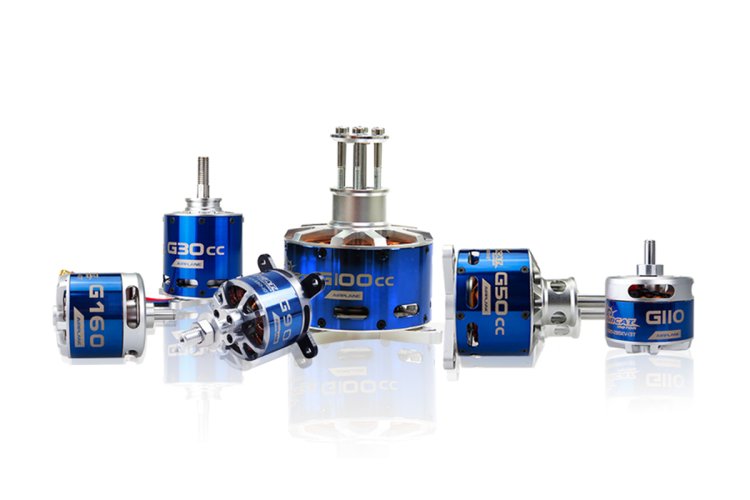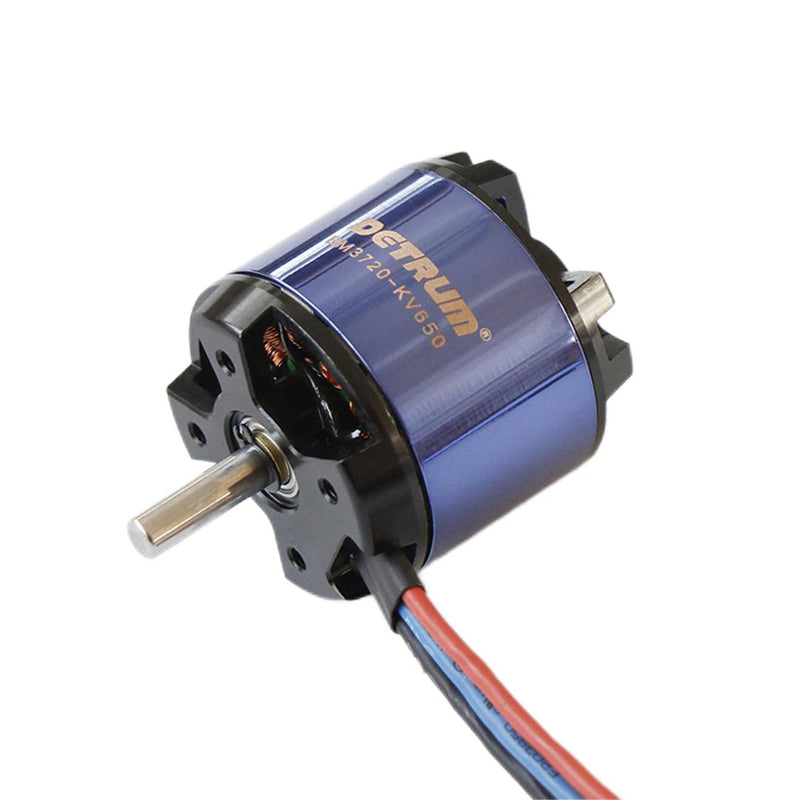What Are the Pros and Cons of Brushless Motors?
In the world of RC (radio-controlled) planes, brushless motors have become the go-to choice for both hobbyists and professionals alike. Known for their efficiency, longevity, and superior power output, brushless motors have significantly improved the performance of RC aircraft over the years.

In the world of RC (radio-controlled) planes, brushless motors have become the go-to choice for both hobbyists and professionals alike. Known for their efficiency, longevity, and superior power output, brushless motors have significantly improved the performance of RC aircraft over the years. This article will dive deep into the advantages and disadvantages of brushless motors, with a special focus on their application in Dynam RC planes, such as the Dynam Smart 3D Sport Trainer V2 4S RC Aerobatic Plane 1500mm Wingspan, and a brief look at my personal experience flying with the Detrum BM3720A-650KV Brushless Motor.
Understanding Brushless Motors
Before diving into the pros and cons, it's essential to understand what a brushless motor is and how it differs from traditional brushed motors.
A brushless motor (BLDC) uses electronic controllers to generate motion, as opposed to brushed motors, which rely on physical brushes to create the electrical connection. This difference makes brushless motors more efficient, requiring less maintenance and producing less heat. The motor uses permanent magnets and a stationary armature, while the rotor (the spinning part of the motor) is powered by an electromagnet, creating a much smoother operation.
Pros of Brushless Motors
1. Higher Efficiency and Power Output
Brushless motors are far more efficient than their brushed counterparts. This efficiency translates to more power and longer flight times for your RC aircraft. Take, for example, the Dynam Smart 3D Sport Trainer V2. With its powerful brushless motor setup, this model can execute precise aerobatics with minimal loss of power, even under demanding conditions.
2. Longer Lifespan
One of the main advantages of brushless motors is their durability. Without brushes, there is significantly less wear and tear, leading to a longer operational life. In my experience flying the Detrum BM3720A-650KV Brushless Motor, I noticed an impressive reduction in maintenance requirements compared to brushed motors. This feature is a huge plus for RC enthusiasts who prefer to spend more time flying than fixing.
3. Less Heat Generation
Since brushless motors are more efficient, they tend to generate less heat. This not only prolongs the life of the motor but also reduces the chances of overheating during extended flights. The Dynam Smart 3D Sport Trainer V2, known for its aggressive aerobatic maneuvers, benefits greatly from this heat management, allowing for sustained high-performance flights without worrying about motor damage.
4. More Power per Weight
Brushless motors deliver more power while being lighter than rc electric motors. This is a significant advantage for RC airplanes, where weight is a critical factor in performance. The Dynam Smart 3D Sport Trainer V2 takes full advantage of this, offering excellent thrust-to-weight ratio, which makes it an ideal choice for beginners and intermediate pilots looking for a responsive and agile aircraft.
5. Quiet Operation
Brushless motors operate much more quietly than brushed motors, which is a critical factor for those who fly in noise-sensitive areas. The quiet hum of a brushless motor allows for a more enjoyable flying experience, particularly during long-duration flights. The Dynam Smart 3D Sport Trainer V2 has a relatively quiet motor that provides a serene flying experience, especially during its aerobatic routines.
Cons of Brushless Motors
While brushless motors offer many advantages, there are a few drawbacks worth considering:
1. Higher Initial Cost
Brushless motors are typically more expensive upfront than brushed motors. However, this higher initial cost is balanced out over time with the increased lifespan and reduced maintenance costs. For hobbyists looking for long-term performance and durability, the added investment is well worth it.
2. More Complex Setup
Unlike brushed motors, brushless motors require an electronic speed controller (ESC) to function properly. This adds a layer of complexity to the setup process. For beginners, it might take a bit more time to understand how to properly configure the ESC with the motor. However, with experience, this becomes second nature.
3. Requires More Maintenance for ESCs
While brushless motors themselves require little maintenance, the ESCs used to control them can sometimes need attention. They might need firmware updates or recalibration to ensure optimal performance. As someone who has been flying RC aircraft for years, I’ve had to troubleshoot and fine-tune ESCs, but this is a minor inconvenience compared to the benefits of brushless motors.
4. Power System Compatibility
For those new to RC aviation, one potential downside is that brushless motors often require more specialized power systems, such as higher-voltage batteries and upgraded ESCs. If you plan on upgrading from a brushed system to a brushless setup, make sure your power system is compatible to avoid additional expenses.
Brushless Motor Performance in Dynam RC Planes
Dynam has become a leading brand in the RC airplane world, largely due to its use of brushless motors in its aircraft. A great example is the Dynam Smart 3D Sport Trainer V2 4S RC Aerobatic Plane. This plane is built for extreme aerobatic performance and is equipped with a high-efficiency brushless motor that allows it to perform complex stunts, from loops and rolls to high-speed passes, without losing power or control.
The Dynam Smart 3D Sport Trainer V2 offers several features that make it stand out among other RC planes:
- 1500mm Wingspan: This provides stability and agility for both novice and experienced pilots.
- 4S LiPo Battery: Paired with a brushless motor, the 4S battery allows for longer flight times and more powerful performance.
- Durable EPO Foam Construction: The combination of lightweight foam and the brushless motor provides excellent durability, even after numerous aerobatic maneuvers.
- Advanced Aerobatic Capabilities: With a brushless motor delivering consistent and reliable thrust, the plane can execute advanced stunts, making it an excellent choice for those learning 3D flying.
Personal Experience with Brushless Motors
I’ve personally used several brushless motors, and one that stands out is the Detrum BM3720A-650KV Brushless Motor. This motor has been a part of many of my RC aircraft, and it has never failed to impress. Its smooth and responsive power delivery made it an ideal choice for high-performance aircraft, particularly those designed for aerobatics and long flights. Whether I was flying a scale warbird or a 3D aerobatic plane, the motor’s efficiency and power output were always top-notch.
In fact, the reliability and performance of brushless motors like the Detrum BM3720A-650KV are some of the reasons I transitioned to exclusively flying brushless-equipped RC aircraft. The power-to-weight ratio, paired with quieter operation and longer lifespan, makes for an all-around superior experience.
FAQ: Brushless Motors in RC Aircraft
Q1: Are brushless motors suitable for beginners? A1: Yes, but they require more initial setup knowledge. For beginners, I recommend starting with a model like the Dynam Smart 3D Sport Trainer V2 that comes equipped with a brushless motor and offers stability and ease of use.
Q2: How long does a brushless motor last? A2: Brushless motors can last for many years with minimal maintenance. Unlike brushed motors, which wear out over time, brushless motors can perform for hundreds of hours before needing a replacement.
Q3: Can I use a brushless motor on all RC planes? A3: Not all RC planes are designed for brushless motors. Ensure that the plane is compatible with the higher power demands and setup requirements of a brushless motor before upgrading.
Conclusion
Brushless motors are the future of RC aviation, and their advantages far outweigh the disadvantages. With their superior efficiency, power, durability, and quiet operation, brushless motors enhance the flying experience, making them a top choice for RC enthusiasts. Whether you’re flying a Dynam Smart 3D Sport Trainer V2 or another high-performance aircraft, you’ll enjoy improved performance and longer-lasting motors. While there are a few hurdles to overcome with initial setup and cost, the benefits make it well worth the investment.
What's Your Reaction?



















